What do we mean when we say, “unsold new cars”? The term seems very self-explanatory but in the intended context. When we say, “unsold new cars” we are referring to all slow-selling cars that have been sitting in the lots of car retailers remaining unsold for a long while. Various reasons may be responsible for such cars to remain unsold.
The problem that arises is that car manufacturers cannot accurately estimate the number of cars they might sell and therefore they produce excess. An excess number of cars are produced each year and newer models of these outgoing vehicles. This number keeps adding up and there are now hundreds and thousands of unsold new cars that have been stashed in the parking lots of car manufacturers and retailers all over the country.
- What Are “Unsold New Cars”?
- How Do Retailers Get Them?
- Advantages Of Buying One
- Disadvantages Of Buying One
- What Happens To Them?
- What Manufacturers Do?
- When Should You Buy?
- How To Identify One?
- Final Conclusion
Unsold Cars
Each year a newer model of the car comes out and the current outgoing model is discontinued by the manufacturer. But the stock of the older model that the retailers have already bought from the manufacturers is still sitting their lots unsold. The retailer must find ways to clear their stock as soon as possible or end up losing an average of $30,000 for each car that is unsold.
The first thing to understand about unsold new cars is that both, the retailer, and the manufacturer are bound to lose money when such unsold cars are sitting in the lots of retailers. The way the American car market works is that the manufacturer is not allowed to sell their product directly to the customer due to something known as the franchising law. It is essential for the retailer to act as the middleman by purchasing the cars from the manufacturer and then selling them to the ultimate customer.
The manufacturers have already sold these “unsold new cars” to the retailers, and it is now the retailer’s responsibility to move these cars. But this also means that the manufacturer must wait for these cars to be sold before the retailer has the space and money to buy new cars from them. So, it is in the best interest of the retailer as well as the manufacturer to move these unsold new cars as soon as possible.
How Do Retailers Get Unsold Cars
Most retailers buy cars from the manufacturer on credit and stack up interest on these loans over time (also, be sure to check out our review of Capital One auto loan rates and what is a good APR for a car). This means that the retailers cannot place further orders to the manufacturer. Due to this the production cycle of the manufacturers is sometimes disrupted and delays might be caused to other retailers. So, to cut their losses, retailers often sell these cars at a lower price, sometimes even at a loss, to cut their losses.
This is done so that these slow-moving cars can be replaced with faster-moving, profit-making cars. The retailers cannot give these unsold new cars back to the manufacturer. The retailers are forced to look for other avenues to get rid of this dead stock. They may choose to sell these cars in bulk to other retailers in a different area at a discounted price, where there is an anticipated demand for these vehicles.
Retailers often sell these cars outside of the country. There are dealers who buy a whole lot of these unsold new cars at discounted prices from different retailers. These dealers then become wholesalers for foreign markets and sell these cars at discounted rates in bulk. The problem which arises is that the retailers cannot cut the prices of these unsold new cars too much otherwise it becomes harder to sell the newer vehicles that come in.
Manufacturers want to sell the newer cars more because they are more profitable, and they do not want the previous year’s model to flood the market. Due to this, there are a lot of cars each year that are stashed in manufacturers’ lots gathering dust and eventually wasting away. The cost of these wasted cars is recovered from the cost of other vehicles to minimize the losses that the car manufacturer might incur.
Advantages of Unsold New Cars
As a buyer looking for a good deal on a new car, such unsold new cars might be the way to go as the dealer might be willing to give you a very good deal on a car that has been sitting on their lot for more than 90 days. Most retailers mark down the price of the current outgoing model whenever a newer model comes out. However, the prices of these cars cannot be heavily discounted as it might affect the sales of the newer model.
Unsold New Cars, Pros #1. Discounts
The dealer may be willing to give a further discount, on top of the marked-down price because dealers do not want any car to sit on their lot for a long time. The longer the cars sit on the lots being unsold, the less likely it is that the car will be sold at all because a newer model of the same car might be available in the market at a similar price.
Unsold New Cars, Pros #2. Clearance Of Stock
The retailers have already bought these cars from the manufacturer, and they are desperate to make their money back by selling the car. The retailers want to sell their stock as soon as possible and anything that has been sitting on their lot for more than 90 days starts losing value to the dealer as he starts racking interest on it. So, as a buyer, it is a good opportunity to try and convince the dealer to give you a good discount on an older car that has been lying in the inventory of the dealer for a while.
Unsold New Cars, Pros #3. No Need For The Latest Model
For a buyer, it is important to understand that a car is a commodity that doesn’t need upgrading each year. Most buyers use their vehicles for long periods of time before they look for a change. According to a report by Forbes magazine, the average American uses a vehicle for more than seven years when bought new.
Regardless of this fact, car manufacturers come out with newer models of their cars each year. Car companies are forced to release new cars as well as updated versions of their outgoing cars each year to keep up with the competition and to keep themselves in business.
Though it might be true that newer generation models might be slightly more technologically advanced or mechanically advanced and so on, but each year is not a substantial improvement over the previous outgoing model. This means that as a buyer if you can get a good deal on the previous generation model and it saves you a good amount of money, then it makes more sense to buy an older car.
Unsold New Cars, Pros #4. Lower Depreciation Rate
Depreciation is the loss of value a car experiences over time. New cars depreciate the most in the first few years, sometimes losing up to 30% or more of their value in the first year and about 50% or more over three years. However, when you buy an unsold new car from the previous year or older, a lot of that initial depreciation has already occurred, even though the car hasn’t been driven. This means the rate of depreciation will be slower compared to a brand-new model. So, you won’t lose as much money through depreciation over time.
Unsold New Cars, Pros #5. More Room for Negotiation
When a car has been on a lot for an extended period, the dealer is more likely to be flexible with the price. They may be willing to negotiate more on the price or offer additional incentives to close the deal. This is because they are eager to clear old stock to make room for new models. Use this as an opportunity to negotiate for additional features, accessories, or extended warranties.
Unsold New Cars, Pros #6. Full Warranty
Even if the car is from a previous year or older, the manufacturer’s warranty usually starts from the date of purchase, not from the date the car was manufactured. This means you will get the full benefit of the manufacturer’s warranty, just as if you bought a brand-new car.
Unsold New Cars, Pros #7. Same Features, Lower Price
Often, the differences between the new model and the unsold new car from a previous year are minimal. They might have almost identical features, performance, and safety specifications. However, the older model will usually be significantly cheaper. So, you can get the same quality and features as a new car but at a lower price.
Unsold New Cars, Pros #8. Immediate Availability
Buying an unsold new car means you can have the vehicle immediately. You won’t have to wait for the factory to build it and for it to be shipped to the dealer. This is especially beneficial if you need a car quickly.
Unsold New Cars, Pros #9. Lower Insurance Costs
Insurance costs are generally lower for older models. So, even though the car is new, because it is an older model, the insurance cost will usually be lower compared to the latest model.
Unsold New Cars, Pros #10. Extended Features and Add-Ons
Dealers may offer additional features, add-ons, or extended warranties as an incentive to buy the unsold new car. This may include free maintenance, extended warranties, or added features like rust protection, paint protection, or fabric protection at no extra cost.
Remember to thoroughly inspect the car before buying, as it may have been sitting on the lot for a while and may need some maintenance or cleaning. Also, check the vehicle’s history report to make sure there are no hidden issues. And always negotiate the best deal possible.
Buying an unsold new car has many advantages, from significant discounts to lower depreciation and insurance costs. However, it’s important to carefully assess your needs and the deal on offer to make sure it’s the right choice for you.
Disadvantages of Unsold New Cars
Various disadvantages come from such unsold new cars. The fact is that more and more unsold new cars are being added to the stock of such cars each year. They have a lot of negative effects on the car market overall. There are many disadvantages of unsold new cars to the manufacturer, retailer as well as the ultimate buyer and customer of the car.
1. Wrong Estimate
The various car manufacturers in the country cannot correctly estimate the demand and market for their markets. Therefore they always end up producing much more than the actual requirement and the demands of the buyer.
The excess number of cars produced by the manufacturer ends up in the inventory of the car manufacturer or the car dealer. This is to anticipate the future demand. Eventually, all these excess cars end up in lots known as the graveyards. They are named this because these cars never leave these lots and over time these cars waste away.
2. Production Cycle
Just because a car manufacturer has an excess of unsold new cars does not mean that the car company will stop its production line. They would not even slow down their production line for that matter. The company cannot afford to slow down the production cycle as there are a lot of different factors that might be affected.
Car manufacturers cannot lay off employees every time there is an excess of cars that are still unsold. The car manufacturer’s supply chain will also be affected if their consumption of raw materials varies from time to time. Therefore, car manufacturers continue to produce cars in excess even though there are multiple cars each year that literally go to waste.
3. Wasteful To A Retailer
Unsold new cars are extremely wasteful for retailers. The retailers must buy the cars from the manufacturer before they can sell them to the customers. On average, the value of an unsold car in the lot is $30,000. The retailer mostly buys the cars from the manufacturer on credit and each unsold car adds to the debt of the retailer.
These slow-selling cars end up in the inventory of the retailer, taking up space and blocking their money. The retailers have no other option than to sell the car at any cost. Retailers are often forced to sell the cars at very little profit or even at a loss. They usually do this to make back their money that is tied up and buy newer vehicles with that money.
4. Huge Inventory
Large-scale dealers or retailers sometimes end up with a huge inventory of unsold new cars. This eventually starts costing the retailer money. In this case, the retailers may make desperate sales of these vehicles to other retailers in a different locality. They might also sell it to a different country to cut their losses. They want to replace these slow-moving, unsold new cars with newer and faster-selling cars.
5. Wasteful To A Consumer
For the customer also, these unsold new cars are very wasteful. Any car manufacturer cannot afford to lose the money on all the cars, they have sitting in car graveyards. The price of these cars is included in the price of the car that is bought by the consumer of a newer variant of the car.
So, at any point in time, when a person buys a new car from a dealership, the price of that car has been artificially inflated by these wasted cars. However, as a buyer, you will not realize that this overbearing cost has been included in the price of the vehicle. This cost has been hidden as the manufacturer does not want the buyer to feel cheated.
6. The Dealer Might Sell You An Old Variant
Another disadvantage of unsold new cars is that when you go to a dealer to buy a new car, the dealer might be trying to get you to buy an older car so that he can get rid of it. Dealers will try and push these cars as soon as possible to any customers. An unaware buyer might get cheated and end up with an old variant.
They would do so by paying the same price for a car that he/she would have paid for the newer model. Bad deals are just as easy to walk into as good ones. Often the dealer tries to cut their losses in any way possible.
7. Reduced Resale Value
Even though you are buying the car as new, the model is technically a year or more old. This means that when you go to sell the car, it will be valued as a year older than a car bought from the current model year. This can significantly affect the resale value of the car, as cars depreciate the most in the first few years.
8. Possible Maintenance Issues
A car that has been sitting on a lot for a long time might have maintenance issues. Even though the car is new, it might have been sitting outside, exposed to the elements for a prolonged period. This could lead to problems like flat spots on tires, a drained battery, or even problems with the car’s fluids. Be sure to inspect the car thoroughly and ensure it is in perfect condition before buying.
9. Limited Selection
Unsold new cars from the previous year might not have the color or options you want. You might have to compromise on the features or options you desire as the selection will be limited to what is available on the lot.
10. Outdated Technology
Though the differences between models of consecutive years are generally minimal, sometimes there are significant updates or new features introduced. Buying an unsold new car might mean missing out on the latest technology, safety features, or fuel-efficiency improvements.
11. Difficulty in Getting Financing
Some financial institutions might not offer as favorable terms for financing an older model new car. This could mean higher interest rates or a shorter loan term, which could increase your monthly payments.
12. Pressure to Buy
Because the dealer is eager to sell the car, there might be more pressure to buy, which could lead to a rushed decision. Make sure to take your time and thoroughly assess the car and the deal on offer.
13. Manufacturer’s Incentives Might Not Apply
Manufacturers often offer incentives like cash rebates, low-interest financing, or lease specials on new cars. However, these incentives might not apply to unsold new cars from previous years, which could make the deal less attractive.
14. It May Affect Your Car Insurance
The age of your vehicle can affect your car insurance premiums. Even if the car is new to you, insurers might see it as a year old, which could lead to higher insurance premiums.
15. You Might Get a Better Deal on a Used Car
Sometimes, the discounts offered on unsold new cars are not as significant as the depreciation that occurs once you drive the car off the lot. In such cases, you might get a better deal by buying a slightly used car.
Buying an unsold new car can have many advantages, but it’s important to be aware of the potential downsides. Make sure to consider all factors and weigh the pros and cons before making a decision. Also, don’t hesitate to negotiate with the dealer for the best possible deal.
What Happens To Unsold New Cars
All the unsold new cars in the inventory of the retailers have to be sold eventually. The retailer or dealer cannot afford to keep dead stock in their inventory for long. The dealers are desperate to get rid of anything that has been taking up space in the lot.
The longer a car waits in the inventory, the less likely it becomes that the car might ever be sold to any person. Retailers like manufacturers do not have the margin to compensate for the loss incurred from the unsold car. Therefore, retailers try their best to sell all inventory as soon as possible.
Sometimes dealers use these vehicles as test-drive vehicles, loaners, or lease cars to make some use of the car. After using the car a manufacturer then eventually sells it as an old used car. But all the excess cars cannot be used by the dealer. This is why they look for other avenues to sell off all unsold new cars one way or the other.
Dealers may swap cars with other dealers across the country to try and sell as many cars as possible. Some dealers may also have to resort to selling cars outside of the country at cheaper prices. They want to be able to replace the older cars that are sitting in their inventory with newer car models.
What Do Manufacturers Do With Unsold New Cars
The car manufacturers on the other hand, mainly depend on the car retailers to buy the cars from them. The manufacturers of the cars will have to keep on producing more cars consistently to keep up with production schedules. Hence, the manufacturer will keep on producing more cars to keep the assembly lines moving. Irrespective of how many cars are being bought by the retailers.
A manufacturer needs to keep the workers of the factories employed. Manufacturers usually have huge parking grounds or lots where unsold new cars are stored. Car manufacturers will try all the tricks in the book to get rid of their excess stock. Manufacturers usually incentivize their employees to buy these cars, use them as company vehicles, etc. They want to sell as many cars as they possibly can.
Despite all their efforts, there are several unsold new cars that each manufacturer has as part of their inventory. A number of cars are added to that inventory each year. This has led to manufacturers in America buying more and more land every year. They need space to be able to store all this excess inventory. Sometimes in auctions, huge lots of these unsold new cars are sold in bulk. There are also many instances when the cars have to be dismantled for parts and raw materials.
The problem of unsold new cars in the US market is huge. Alongside that, car manufacturers keep on adding to the problem each year. Car manufacturers overestimate the demand for their cars each time and produce a surplus that goes to waste. Car retailers also overestimate the demand and their ability to sell as many cars as they assume they can. This means that there is no real solution to this problem as of now.
When Should You Buy Unsold New Cars
As a buyer, it is important to understand, when is the right time to buy an unused new car. If a car has been parked in the lot of a car dealership for 3 months or more than that, then it is the right time to try and bargain for a good price with the dealer. The dealer will be more than willing to bargain for a better price. This is because more than anyone it is the dealer who understands the need to clear out older inventory.
You should know that each time the dealer tries to convince you to buy an older car, it might not always be a better deal. Any car that has been at the dealership for more than a year is an absolute liability to the dealership. They will try and get rid of it as soon as possible. So, there is a possibility that a dealer might be trying to sell you a lemon.
An unsold new car of the previous generation can be bought at a substantially cheaper price. Especially when compared to the current outgoing model of the same car. Hence, it makes a lot of sense to buy the older model at a discounted price. However, if there is only a marginal difference in the prices of the two models.
Therefore, as a buyer, it does not make sense to buy the older model. So, an unused new car should be bought only if a good deal can be identified by you. Any dealer, whoever, will never really try to short-sell their product. A significant amount of money can be saved on the purchase of the car with the correct knowledge.
How to Identify Unsold New Cars
Whenever a car company releases a newer variant of an existing car in the market, it is always sold at a similar price to the previous outgoing model. If you can identify a dealer who may have stock of the older variant of the car you want.
After the release of the newer variant, there is a very big possibility that the dealer will be willing to let go of the older variant first at a heavily discounted price. This is done to incentivize the sale of the older car as the dealership has spent money on it. Selling an old variant of the car can help them get the money they need to recover.
Sometimes a dealer insists on showing you a car that is far from something you asked for. It may be because the dealer is trying to get rid of those cars. This might be a good opportunity for the buyer! If he/she understands the dealer’s situation, they can try to get a good deal on the car. This will be the right time to bargain with the dealer and get the best deal.
Facts: What Happens to Unsold New Cars
- Car manufacturers do not sell vehicles directly to consumers, but rather to franchised dealers who then sell to the public.
- Unsold or slow-selling cars are the responsibility of individual dealers who cannot send them back to the manufacturer for a refund.
- Most dealers finance the cars they sell, and each car sitting on their lot costs them interest on those loans, called “floor planning”.
- Slow-selling cars take up physical space that could be used for vehicles that might sell quickly and profitably.
- The longer a vehicle sits without selling, the higher the cost of having that vehicle around, making dealers motivated to sell older inventory.
- Dealers may offer their salespeople cash incentives or special discounts to motivate the sales of slow-selling cars.
- Manufacturers offer incentive programs like cashback offers, special subsidized lease deals, and low-interest-rate financing deals to encourage dealers to sell their inventory.
- Dealers may trade vehicles with other dealers in different regions where their slow-moving vehicles might be more popular with buyers.
- A final resort for dealers with unsold cars is to sell them at an auto auction, even at a loss.
- Ultimately, all cars are sold eventually, even if they take a different route to be sold.
Unsold New Cars: In Conclusion…
In conclusion, we can say that since the American car market is too large and diverse. There are a lot of problems that become part of the process. The problems posed by the markets can be devastating for some, but they might just represent opportunities for other people to capitalize upon.
Unused new cars are now becoming a popular choice for buyers to save some money. The problem of making a surplus is much more than the market for these cars. It is evident that any sort of reform to try and solve this problem will be a welcome change to the manufacturer, retailer, as well as the buyer.

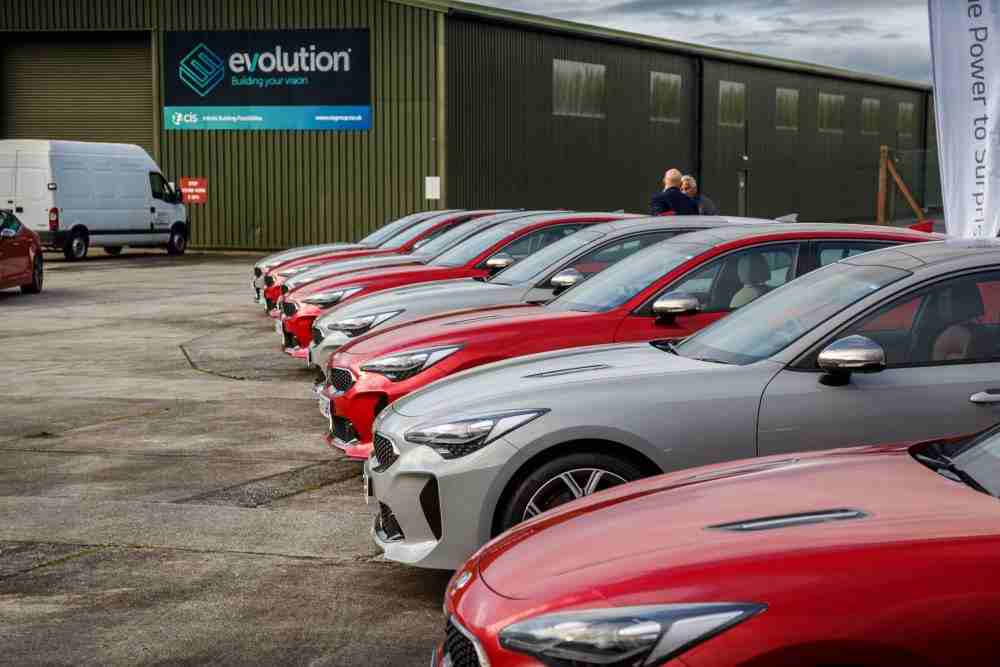
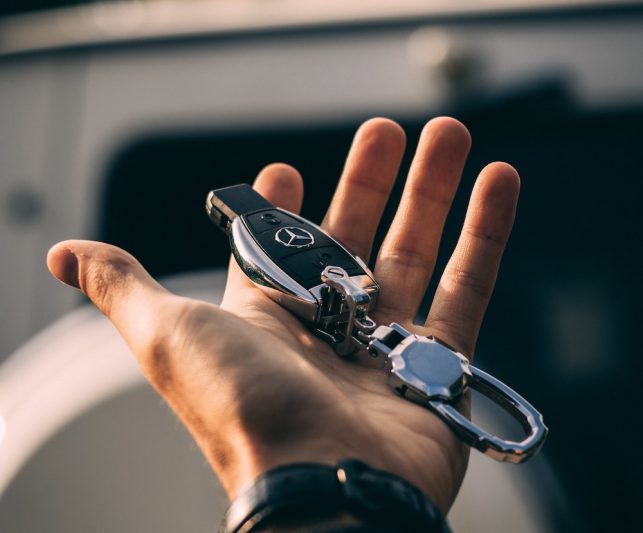
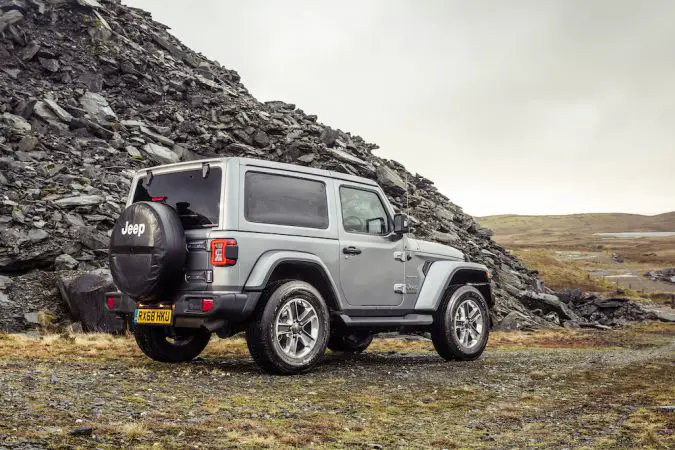
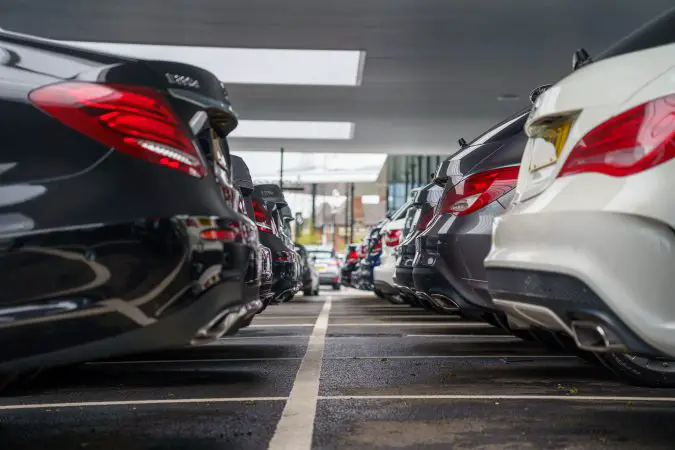
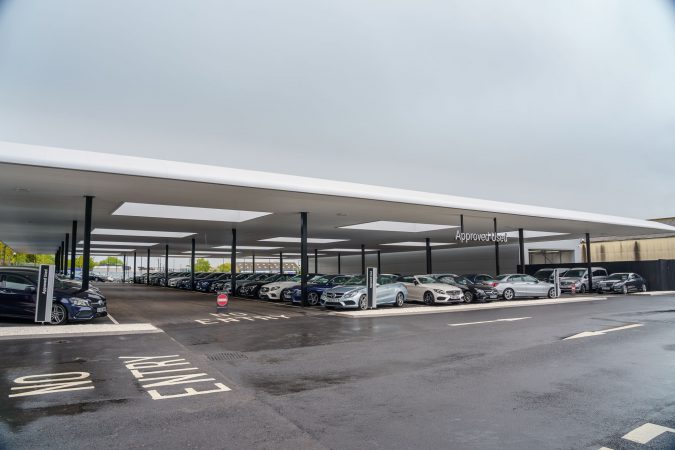
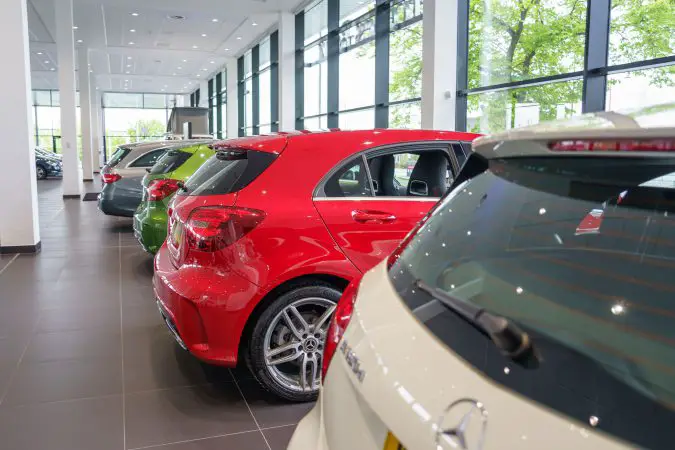
3 comments
i want to buy unsold car of 2020 or 2021 6seater in mumbai.
I’m really in need of a car I walk 3 miles a day to get to work
Can you afford to buy one?